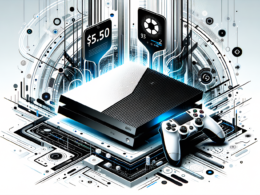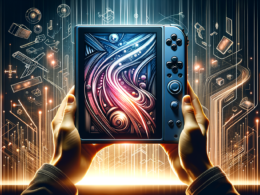Overview
As we approach the reported launch of the ROG Xbox Ally this October, the gaming community is buzzing with anticipation over Microsoft’s foray into handheld gaming. However, potential buyers and critics alike are examining whether the new device can justify its significant price tag amidst a crowded market of handheld gaming PCs and consoles.
Zooming In
Industry Context
The gaming industry has seen a significant shift towards mobile and handheld gaming systems, paralleled by advancements in powerful, compact processors. Companies like Steam, ASUS, and now Xbox with the ROG Ally, are vying for a slice of the lucrative handheld market, which is growing as more consumers seek on-the-go gaming solutions. Microsoft’s partnership with ASUS signifies a strategic pivot, perhaps heralding a new era for Xbox as a facilitator of gaming across diverse platforms.
ROG Xbox Ally: A Technical Perspective
The ROG Xbox Ally promises high performance, featuring the advanced AMD Ryzen AI Z2 Extreme APU-a noteworthy specification that places it in direct competition with high-end handhelds. Despite this, early reports indicate concerns about the device’s memory bandwidth potentially hampering its performance, an issue that both Microsoft and ASUS will need to address to appeal to tech-savvy consumers.
In terms of pricing, the ROG Xbox Ally and its premium variant, the Ally X, are set to launch at approximately €599 ($699) and €899 ($1,050), respectively-figures that put them among the priciest options in the handheld gaming market.
Comparisons and Market Competition
As the most expensive handheld under the Xbox brand, the ROG Ally will need to deliver exceptional performance to stand out. It will enter a market filled with well-regarded alternatives like the Steam Deck and newer devices such as the MSI Claw 8 AI+, which similarly promise high-quality gaming experiences but at lower prices.
The Steam Deck’s competitive pricing at $800 paired with the solid reputation of the Valve brand presents a formidable challenge to the ROG Ally. Meanwhile, Lenovo’s Legion Go, another competitor with its Z1 Extreme APU, offers a similar gaming experience with its unique hybrid design, which appeals to a broad audience.
Potential Impact on Xbox’s Strategy
By expanding into handhelds, Microsoft is making a bold statement about its intent to diversify its gaming ecosystem beyond traditional consoles. This move aligns with the company’s broader strategy of shifting Xbox from a hardware brand to a versatile gaming platform, accessible from various devices. However, to truly capture market share, the ROG Ally must not only compete on hardware specs and price but also offer compelling exclusive content or functionality, potentially leveraging its Xbox Game Pass service.
Consumer and Expert Reactions
Reactions within the industry reflect both excitement and skepticism. Many analysts see the collaboration between Xbox and ASUS as a strategic experiment rather than a guaranteed success. Industry commentators like Xbox president Sarah Bond have highlighted potential software exclusives such as Hollow Knight: Silksong on the ROG Ally debut as potential differentiators.
Conclusion
As October approaches, the success of the ROG Xbox Ally remains to be seen. Its high entry price places it in direct competition with established devices, whilst consumers await clear differentiators beyond its Xbox branding. Moving forward, Microsoft’s ability to leverage software synergies with its existing services like Xbox Game Pass will be crucial in establishing the ROG Ally as a formidable player in the handheld gaming market.









